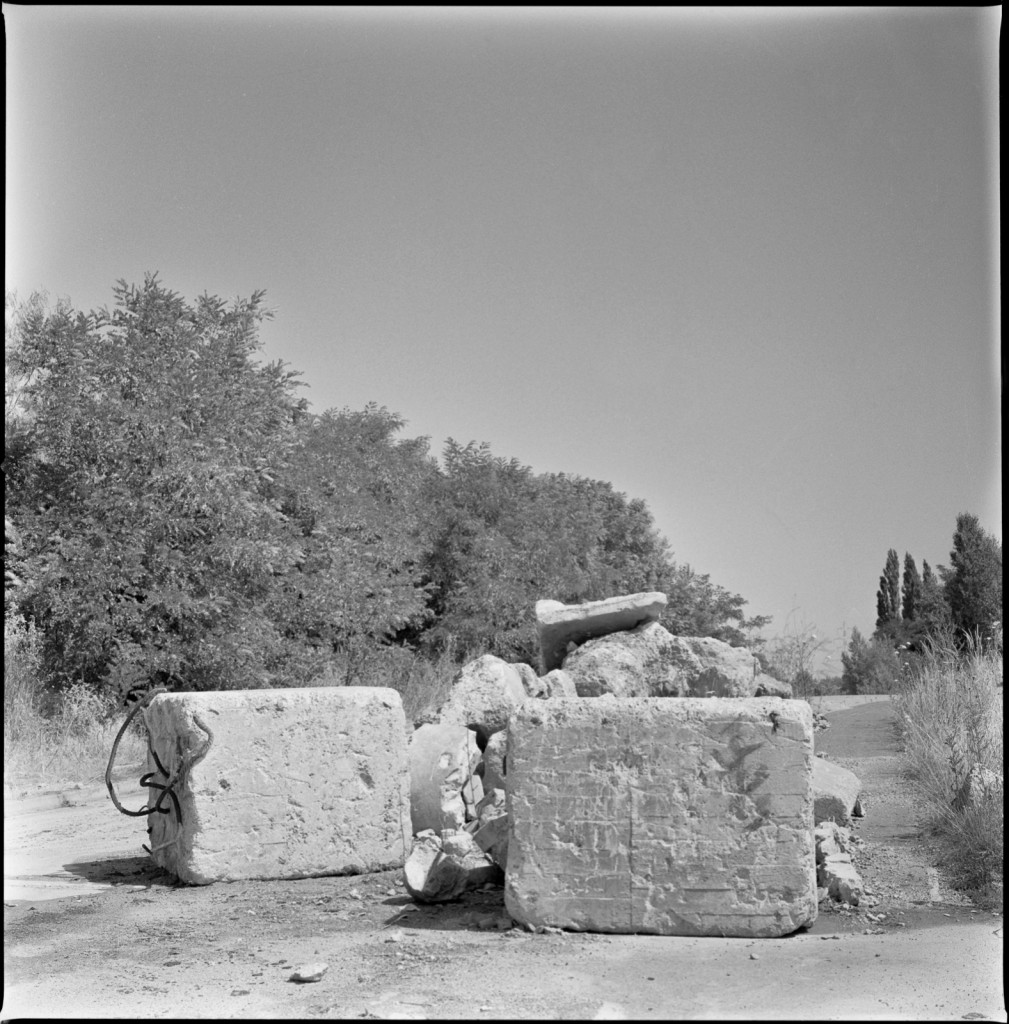I grew up next to a chemical plant on the outskirts of Halle once a center of the cemical industry in Germany. The smell of chlorine was more familiar to me than the smell of flowers. The factory started in the 30s with manufacturing poison gas s-lost (senfgas) and was Germany's 2nd biggest factory for chemical weapons. As kids we played in the bunker entrances of the former Orgacid GmbH. Rumors went around that there is still poison gas inside but the Russians had destroyed most of the bunker area. Apperantly, poison was found inside the place as well as in the well underneath in the 90s. An expensive redevelopment was started and all you see today is a fenced in area of greens.Some details in German can be found here.
After the war the factory started making different things made of poly vinyl chloride such as plastic flooring, washable wall paper using a PVC paste rasin which is still in production today as ATF Ammendorfer Plastisole. In the 80s they tried making synthetic rubber since East Germany had little natural resources. But the realization from concept to production failed and the engineer who developed the process left the country.
I want to talk a little more about the history of the chemical industry in East Germany and especially about Buna which was the mother company of the Ammendorfer Plastwerke. Buna is the synonym for a synthetic rubber made of butadiene and styrene. The Nazi goverment wanted to be independent from natural rubber and opened Buna as a daughter of I.G. Farben in 1936. The pre-war production of natural rubber was barely reached and the planned factory in Auschwitz using forced labor never started production.
After the war production was continued under Russian command until 1954 when the Buna become a state-owned company. Polyvinyl chloride was the second important product manufactured here using the calcium carbide route. Making calcium carbide needs a lot of water and a lot of energy which was readily available using the brown coal from the open cast mining nearby. But that also meant the step by step destruction of the environment which was totally neglected until the 80s when the situation was already quite desolate.
In the 60s the factory also started an oil based production line. However, the non-petrochemical production was inreased and modernized in the 80s since the Russian oil deliveries declined. 18000 people worked here until the re-unification in 1990 when the state-owned industry broke apart. Satellite cities like Halle-Neustadt and Silberhoehe were built to house the increasing need of human force. I believe the interesting part was the attempt to run a chemical industry mostly independent on natural resources like rubber and oil replacing them with unlimited usage of humans and nature.
My parents worked in the Ammendorf factory for many years. They started working there before I was born in 1969 and still did in early 1990. Even I spent summer breaks there to make some money. Most of the place broke apart in the early 90s. Only small parts survived the re-unification and the sell-out of East Germany. Most chemical plants were victims of over-employment, high cost due to outdated technology and huge environmental problems. My mother lost her job as a chemical lab assistant quite early and re-trained to be a nurse in an retirement home. My father stayed on for many years to be the safety engineer for the split off wall paper factory which finally closed doors in 2011.
What's mainly left today are traces of the past, streets but almost none of the former buildings left. Looking closer, I could find pieces of tiles and porcelain plates as small broken tokens of the past …
The images were taken with a Hasselblad 500C/M on Rollei RPX100 and developed in Rodinal.
Similar Posts:
- A bit of history
- A day at Sun Moon Lake 日月潭
- taking the hasselblad to a concert
- lens talk: the voigtlaender color skopar 35mm/2.5
- India – the places – the rest – 1 of 2





location within my public complexes! gecacedgffcd